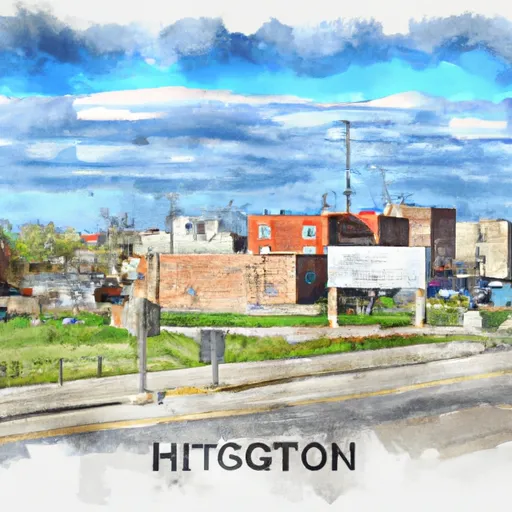-
 Snoflo Premium
Snoflo Premium
Get unlimited access to all our content
With no Ad interruptions! - Start Your Free Trial Login with existing account
Hugoton
Eden Index
Climate
9.4
•
Recreation
•
Community
2.4
•
Safeguard
4.4/10

Hugoton, Kansas is a small town located in Stevens County in the southwestern part of the state. It has a semi-arid climate with hot summers and cold winters. Summers are characterized by high temperatures that often exceed 90°F (32°C), while winters can be quite cold with temperatures dropping below freezing. The area experiences low precipitation throughout the year, making it prone to drought conditions.
As for hydrology constituents, Hugoton is situated in the High Plains Aquifer region, which is an important source of groundwater for agriculture and municipal use. The town relies on this aquifer for its water supply.
In terms of outdoor recreation, Hugoton offers several opportunities for nature enthusiasts. Stevens County State Lake is a popular spot for fishing, boating, and camping. The lake is stocked with various fish species, including bass, catfish, and crappie. There are also several parks and trails in the area, such as the Hugoton City Park and the Hugoton Nature Trails, which provide opportunities for hiking, picnicking, and wildlife observation.
Overall, Hugoton, Kansas offers a unique climate, a reliance on groundwater resources, and various outdoor recreation opportunities for residents and visitors alike.
What is the Eden Index?
The Snoflo Eden Index serves as a comprehensive rating system for regions, evaluating their desirability through a holistic assessment of climate health, outdoor recreation opportunities, and natural disaster risk, acknowledging the profound impact of these factors on livability and well-being.
Climate Health Indicator (CHI): 9.4
Hugoton receives approximately
456mm of rain per year,
with humidity levels near 61%
and air temperatures averaging around
13°C.
Hugoton has a plant hardyness factor of
6, meaning
plants and agriculture in this region thrive during a short period during spring and early summer. Most
plants will die off during the colder winter months.
By considering the ideal temperature range, reliable water supplies, clean air, and stable seasonal rain or snowpacks, the Climate Health Indicator (CHI) underscores the significance of a healthy climate as the foundation for quality living.
A healthy climate is paramount for ensuring a high quality of life and livability in a region, fostering both physical well-being and environmental harmony. This can be characterized by ideal temperatures, reliable access to water supplies, clean air, and consistent seasonal rain or snowpacks.
Weather Forecast
Streamflow Conditions
Upper Cimarron
Area Rivers
Upper Cimarron
Snowpack Depths
Upper Cimarron
Reservoir Storage Capacity
Upper Cimarron
Groundwater Levels
Recreational Opportunity Index (ROI):
The Recreational Opportunity Index (ROI) recognizes the value of outdoor recreational options, such as parks, hiking trails, camping sites, and fishing spots, while acknowledging that climate plays a pivotal role in ensuring the comfort and consistency of these experiences.
Access to outdoor recreational opportunities, encompassing activities such as parks, hiking, camping, and fishing, is crucial for overall well-being, and the climate plays a pivotal role in enabling and enhancing these experiences, ensuring that individuals can engage in nature-based activities comfortably and consistently.
Camping Areas
| Campground | Campsites | Reservations | Toilets | Showers | Elevation |
|---|---|---|---|---|---|
| Beymer Water Recreation Park | 8 | 3,000 ft | |||
| Lake Palo Duro | None | 2,920 ft | |||
| Hardesty Park - Optima Lake | None | 2,781 ft | |||
| Frazier Park | None | 2,975 ft |
Nearby Fishing
Nearby Ski Areas
Catastrophe Safeguard Index (CSI):
The Catastrophe Safeguard Index (CSI) recognizes that natural disaster risk, encompassing floods, fires, hurricanes, and tornadoes, can drastically affect safety and the overall appeal of an area.
The level of natural disaster risk in a region significantly affects safety and the overall livability, with climate change amplifying these risks by potentially increasing the frequency and intensity of events like floods, fires, hurricanes, and tornadoes, thereby posing substantial challenges to community resilience and well-being.
Community Resilience Indicator (CRI): 2.4
The Community Resilience Indicator (CRI) recognizes that education, healthcare, and socioeconomics are crucial to the well-being of a region. The CRI acknowledges the profound impact of these elements on residents' overall quality of life. By evaluating educational resources, healthcare accessibility, and economic inclusivity, the index captures the essential aspects that contribute to a thriving community, fostering resident satisfaction, equity, and social cohesion.

